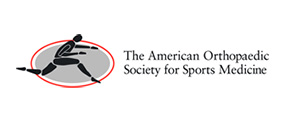
Frequently Asked Questions
After Surgery:
- Can I drive after my surgery?
- How soon can I fly after surgery?
- Can I smoke after surgery?
- When can I go back to work after surgery?
- How do I sleep for the first couple weeks after surgery?
- What is the CPM and why do I need it?
- When do I start Physical Therapy, how often and how long?
- Should I use heat or ice after surgery?
- When can I bear weight, and how long will I have crutches?
- Can I walk up and down stairs at my house?
- If my surgery is later in the day, can I eat in the morning?
- What is the success rate for the surgery?
- Are there certain positions or activities I should avoid?
- What will be the hardest thing to do, i.e. sitting, standing, or lying?
- If I need a bursectomy, how will you know? And what happens without it?
- What is Lovenox therapy?
- How long does the repair last?
Can I drive after my surgery?
Typically, one would have difficulty driving for about 2-3 weeks, though you might be able to drive short distances within a week after surgery. It all depends on pain, swelling, stiffness, type of car, side of surgery: right vs. left, etc. Most patients do NOT drive AT LEAST until after their first postoperative visit (7-10 days after surgery). Even then, caution should be exercised, especially if you are on pain medication or if mobility is limited.
Reflexes and coordination are often somewhat impaired for several weeks after surgery, so care should be taken to drive slowly, with extra distance between cars, etc.
Most people are able to resume relatively 'normal' driving about six weeks after surgery.
You must regain adequate muscle control for braking and accelerating before you try to drive.
Contact your auto insurance company to see if they have any additional restrictions/exclusion clauses on driving after surgery.
How soon can I fly after surgery?
For surgery on the arms and upper extremities, the risk of developing blood clots after surgery is thought to be very low. The true risk is unknown, but in my experience, flying one week after surgery is fine. I've never known anyone to get a blood clot following those guidelines.
Can I smoke after surgery?
Smoking can take a significant toll on the musculoskeletal system. A growing body of research states that tobacco and nicotine increase the risk of bone fractures and interfere with the healing process. Nicotine can slow fracture healing, interfere with estrogen effectiveness and counter the antioxidant properties of vitamins C and E. At a 2002 meeting of the American Academy of Orthopaedic Surgeons, research on the topic of smoking and its effect on the musculoskeletal system was reviewed. Some of the orthopaedic problems caused by smoking include:
- more severe disc degeneration
- weakened spinal ligaments
- reduced production of bone cells
- faster bone loss in post-menopausal women
- fractures take longer to heal
- rotator cuff surgery is less successful
- longer healing time for surgical incisions
- more post-surgery complications
- delayed spinal fusion
Quitting smoking seems to improve the healing process in most cases, except for long-term, heavy smokers who have permanent artery damage, according to researchers. Those with permanent damage due to smoking may not heal easily when a peripheral part of the body is involved, since blood supply to the area may be poor.
When can I go back to work after surgery?
This is another question to which the answer is: “it depends.”
Doctors determine what impairments patients may have, and lawyers determine what disabilities patients may have. Thus, impairments are defined medically and disabilities are defined legally. There is a big difference between the two.
I will assign your restrictions, based on your injury and course of treatment, taking into consideration the nature of your job. It will be up to you and your employer to determine whether or not you can work within the scope of those restrictions. If there is modified work available to you, then you must decide whether or not you are going to do it. If no such "light duty" work is available to you, then you or your employer can decide if you should go work, work from home or simply take time off. Contact your employer's human resources division for further clarification.
How do I sleep for the first couple weeks after surgery?
You will wake from surgery with a pillow roll between your ankles and an ace bandage holding it in place. You will need to sleep like this for the first 2 weeks. Some patients have found it more comfortable to sleep in the CPM which is also acceptable. The reason we do this is so you do not excessively externally or internally rotate your operative hip.
What is the CPM and why do I need it?

CPM stands for continuous passive motion and it is a machine that will move your hip through a passive range of motion, as opposed to an active range of motion in which the patient does the work. The reason behind using a CPM is to increase blood supply to the affected area, which in turn promotes healing by bringing oxygen and nutrients to the area. You will be given the parameters for the range of motion after surgery but typically will not exceed 90 degrees hip flexion. A DME (durable medical equipment) company will contact you regarding your benefits and if you have an out of pocket expense in regards to the CPM. It is not mandatory you get the CPM however it is beneficial and recommended.
When do I start Physical Therapy, how often and how long?
You can start PT as early as 5 to 7 days after surgery. Depending upon your specific condition, you may start PT before you see Dr. Hyman in the office, but most patients have their first PT visit on the same day they see him back in the office. You will go 2 times a week for the first 6 weeks. The rate will gradually decrease as you heal and become more independent with home exercises. Dr. Hyman has specifically trained physical therapists regarding his hip protocol.
Should I use heat or ice after surgery?

Always use ice! Heat increases blood flow and can cause increased inflammation and swelling. Heat is not indicated until weeks to a month or two after surgery. You will be contacted by a DME company regarding a cryotherapy unit. Cryo=cold. This is a service Dr. Hyman prescribes for his patients. However, not all insurance companies cover this cost therefore it is not mandatory that you get it. If you already have an ice pack at home, that should suffice.
When can I bear weight, and how long will I have crutches?

Everyone will be Non-weight bearing (NWB) for the first 1-2 weeks after the surgery. This is because your muscles are in 'shock' and coordination/balance are off. Most patients progress to toe touch weight bearing in week 2-3 and are off crutches completely by 3-4 weeks. However, if osteoplasty (shaving of the bone) is done, you may be NO weight bearing for the first 3-4 weeks. If a labral repair is done, crutches may be needed 4-6 weeks. During this first 4 to 6 week period you will be walking around very slowly and sore. At about 6 weeks, most patients are ambulating normally and you can gradually increase the hip range of motion above 90 degrees. You will receive crutch training at the hospital during your pre-op visit.
Can I walk up and down stairs at my house?
Yes. However you will need to take them slowly and carefully, i.e.: one at a time. Navigating them may be a little tricky, so it is not advised to make multiple trips during the first couple of weeks.
If my surgery is later in the day, can I eat in the morning?
Generally, patients do not eat after midnight the night before their surgery. The reason for this is so there is not food/acid in your stomach for at least 8-10 hours prior to going under anesthesia. If you had food/acid in there, it could cough up into your lungs during surgery and that wouldn't be good. Since there is always a chance that your surgery could be suddenly moved up to earlier in the day, we generally advise patients NOT to eat after midnight regardless of when their surgery is.
What is the success rate for the surgery?
Of course it is patient dependent, but our overall success rate is in the 90-95th percentile range. Generally, the more arthritis and cartilage damage you already have, the less favorable the outcome. For more information on outcomes, see our Research page.
Are there certain positions or activities I should avoid?
Yes, you should avoid flexing your hip greater than 90 degrees (a right angle) for the first 6 weeks. You should also avoid the splits! Intimacy may need to be modified for the first couple of months after your procedure. Avoid having to bend all the way over to tie up shoes (wear slip-ons, sandals, flip flops, etc. – safe but comfortable shoe wear). Avoid very low beds, chairs, car seats and toilet seats if possible. No squats or lunges. Avoid these things for at least 6 weeks after surgery.
What will be the hardest thing to do, i.e. sitting, standing, or lying?
This is patient specific. Some patients find sleeping and lying the most difficult due to not being able to find a comfortable position to sleep at night. Standing may be more difficult for others; as you become more active you may become sore.
If I need a bursectomy, how will you know? And what happens without it?
Typically Dr. Hyman makes the decision to inspect, debride or repair the bursa and associated tissue at the time of surgery based on appearance and your history and pre-op examination. It is removed and eventually 'grows' back. So there are no long-term issues with having it removed.
What is Lovenox therapy?
Lovenox is an injectable drug used to prevent, not treat, DVT or deep vein thrombosis, aka blood clots. Blood clots typically form and settle in the lower leg or calf muscle area as a result of blood not circulated and congealing. This can happen during or after surgery, when your body is trying to clot its blood to minimize bleeding during or after the procedure. It can occur because blood flow is slow when you are not moving around as normal, and Dr. Hyman performs minimally invasive surgery but there is always a risk, albeit low.
Measures are taken so this doesn't happen. Those include pumping your feet up and down as if pumping the gas in a car, taking Aspirin daily, or wearing TED hose (ThromboEmbolicDevices) or SCD (sequential compression devices). We also encourage having the patient up and moving/ambulating as soon after surgery as possible. But if you are at high risk for forming a blood clot, Lovenox will be prescribed. The medication is administered twice a day via a small shot that is given in the subcutaneous area, typically the fat in the stomach.
Click Here to download the Bleeding & Clotting Risk Factors PDF form.
How long does the repair last?
That is a question for which there is no real answer. Long term outcomes, i.e. many years down the road, are not well known. The short-term results seem great and we are seeing more and more success with time. We do however, have evidence to believe that the more damage that is in the hip, especially in the cartilage, when you have arthroscopy, the less likely it is that your hip will last you forever. For more information on outcomes, see our Research page.
For more information on what to expect for your surgery, please see The Surgery page.
I would like to thank you sincerely for the great care that you have provided me. I am deeply grateful to both of you and all your wonderful clinic and hospital team.
Dr. Hyman diagnosed my problem right away. I had surgery a couple of months later and now after 2 years I feel like a new person.
Since Dr. Hyman operated on my left hip I’ve been able to walk better, longer, and with better ease than I could ever imagine.
I thank God every day that I had that surgery since I have finally gotten rid of the pain that has kept me awake at night for years.
I appreciate you taking the time to educate me about my injury. I also appreciate the kindness and professionalism of the entire staff at Atlanta Sports Medicine.
Thank you so much from the bottom of my heart. For the first time in approximately a year and a half I am pain free.
I appreciate the attentive, professional care and could not envision a better experience. I truly am thankful to be under your care.







